When Did Transformer Electrical Devices Become the Backbone of Power Infrastructure?
Imagine a world without electricity flowing seamlessly into our homes and businesses. It’s hard to picture, right? That’s because transformer electrical devices have become the unsung heroes of our power infrastructure.
Transformer electrical devices became the backbone of power infrastructure in the late 19th century, with the development of the first commercial transformer by William Stanley in 1885. This marked the beginning of practical AC power distribution, revolutionizing how we transmit and use electricity.
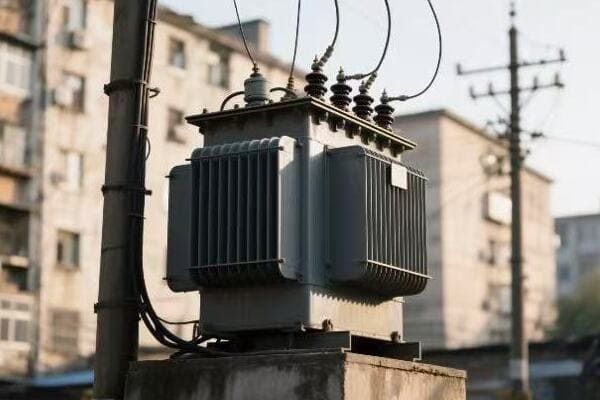
As we dive deeper into this topic, we’ll explore the fascinating journey of transformer technology and its profound impact on our modern world. From the spark of genius that birthed these devices to their evolution into smart, efficient powerhouses, there’s so much to uncover.
Spark of Genius: The Birth of Transformer Technology?
Picture this: It’s 1831, and a brilliant scientist named Michael Faraday is tinkering in his lab. Little did he know, his discovery would change the world forever.
The birth of transformer technology can be traced back to Michael Faraday’s discovery of electromagnetic induction in 1831. This groundbreaking finding laid the foundation for all future developments in transformer technology.
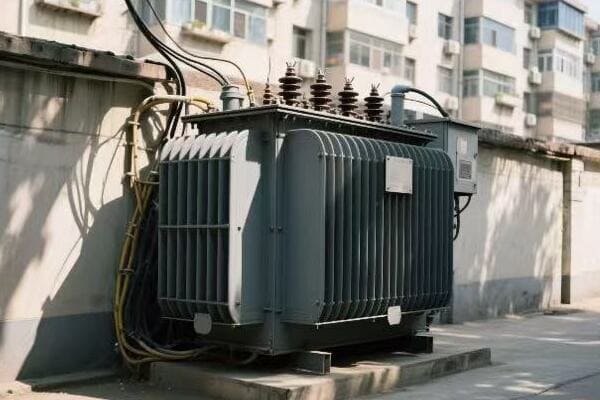
Let’s take a closer look at how this spark of genius evolved:
The Early Days of Electromagnetic Induction
Faraday’s experiments were nothing short of revolutionary. He showed that a changing magnetic field could induce an electromotive force (EMF) in a nearby coil. This might sound technical, but trust me, it’s the basis of how all transformers work today.
I remember learning about this in my engineering classes, and it still amazes me how one man’s curiosity could lead to such a world-changing discovery.
From Induction Coils to Commercial Transformers
The journey from Faraday’s discovery to practical transformers wasn’t straightforward. Here’s a quick timeline:
- 1836: Rev. Nicholas Callan invents the induction coil
- 1884: Károly Zipernowsky, Ottó Bláthy, and Miksa Déri create the ZBD transformer
- 1885: William Stanley develops the first reliable commercial transformer
Each of these steps was crucial in bringing transformer technology to life. The ZBD transformer, with its closed magnetic circuit, was a game-changer. It significantly improved efficiency, paving the way for widespread adoption.
The Impact of Early Transformers
The introduction of commercial transformers in 1885 was a turning point. Suddenly, we could transmit electricity over long distances efficiently. This wasn’t just a technical achievement; it was the key to electrifying entire cities.
I’ve visited some of the early power plants that used these transformers, and it’s incredible to think about how they changed the landscape of our cities and towns. The ability to step up voltage for transmission and step it down for safe use in homes and businesses revolutionized modern life.
Power Play: Transformers in the AC vs. DC Showdown?
Ah, the great AC vs. DC debate. It’s a story that never fails to captivate me, filled with brilliant minds, fierce competition, and world-changing technology.
Transformers played a pivotal role in the AC vs. DC showdown of the late 19th century, ultimately leading to the widespread adoption of AC power systems. Their ability to efficiently step voltage up and down gave AC a significant advantage over DC in long-distance power transmission.
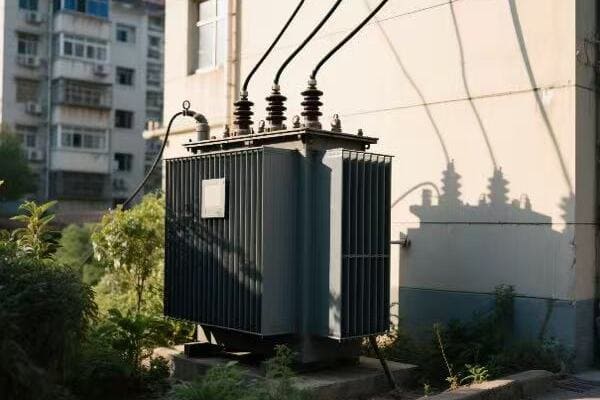
Let’s dive deeper into this electrifying chapter of history:
The War of Currents
In one corner, we had Thomas Edison championing DC (Direct Current). In the other, Nikola Tesla and George Westinghouse promoting AC (Alternating Current). The stakes were high – whoever won would shape the future of electricity distribution.
I’ve always been fascinated by this period. Imagine the tension, the public demonstrations, and the fierce debates. It was more than just a technical disagreement; it was a battle for the future of power.
Why Transformers Tipped the Scales
Here’s where transformers became the game-changer:
-
Voltage Flexibility: AC systems could use transformers to step voltage up for long-distance transmission and down for local use. DC systems couldn’t do this efficiently.
-
Reduced Power Loss: Higher voltage meant less power loss over long distances. This was a huge advantage for AC systems.
-
Cost-Effectiveness: AC systems with transformers required less copper for transmission lines, making them more economical.
I remember studying the mathematics behind power transmission in college. The equations clearly showed why AC with transformers was superior for long-distance power distribution.
The Outcome and Its Impact
The AC system, backed by transformer technology, eventually won out. This victory shaped our entire power infrastructure. Today, our grids are built on AC power, with transformers playing a crucial role at every stage.
| AC Advantages | DC Limitations |
|---|---|
| Efficient long-distance transmission | High power loss over distances |
| Easy voltage conversion with transformers | Difficult and inefficient voltage conversion |
| Lower overall system costs | Higher infrastructure costs |
| Simpler generators and motors | More complex power generation and usage |
This table really puts into perspective why AC became the standard. Every time I work on a power system project, I’m reminded of this historical showdown and how it shaped our modern world.
Grid Makers: How Transformers Wove the Web of Electricity?
When I think about how our modern power grid came to be, I can’t help but marvel at the role transformers played. They’re like the silent weavers of our electrical web, connecting power plants to our homes and businesses.
Transformers became the key components in weaving the web of electricity by enabling the creation of interconnected power grids. Their ability to efficiently step voltage up and down allowed for the development of a hierarchical power distribution system, from high-voltage transmission lines to local distribution networks.
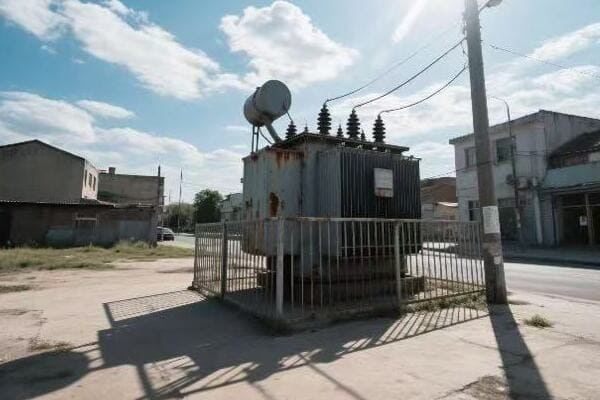
Let’s explore how transformers made this possible:
The Birth of Power Grids
The concept of a power grid as we know it today didn’t exist before transformers. Here’s how it evolved:
-
Isolated Power Systems: Initially, power was generated and used locally. Each factory or neighborhood might have its own generator.
-
The Transformer Revolution: With the advent of efficient transformers, it became possible to transmit power over longer distances.
-
Interconnected Networks: As transformer technology improved, power companies began connecting their systems, creating larger, more reliable networks.
I remember visiting an old power plant that was part of one of the first interconnected grids. It was a humbling experience to see where it all began.
The Transformer’s Role in Grid Architecture
Transformers are the unsung heroes of our power infrastructure. They perform several crucial functions:
-
Voltage Step-Up: At power plants, transformers increase voltage for long-distance transmission. This reduces power loss over the lines.
-
Voltage Step-Down: As power gets closer to end-users, transformers reduce voltage to safe, usable levels.
-
Isolation: Transformers provide electrical isolation between different parts of the grid, enhancing safety and control.
-
Power Quality Management: Modern transformers help manage power quality issues like harmonics and voltage fluctuations.
Here’s a simplified view of how transformers fit into the grid:
| Grid Level | Transformer Type | Typical Voltage Range |
|---|---|---|
| Generation | Step-Up | 10-20 kV to 100-750 kV |
| Transmission | Step-Down | 100-750 kV to 50-100 kV |
| Sub-Transmission | Step-Down | 50-100 kV to 10-50 kV |
| Distribution | Step-Down | 10-50 kV to 120/240 V |
Every time I work on a grid project, I’m reminded of how crucial each of these transformer stages is to the overall system.
The Impact on Energy Access
The development of transformer-enabled grids had a profound impact on society:
-
Widespread Electrification: It became possible to bring electricity to rural areas and expand urban power networks.
-
Industrial Growth: Reliable power grids fueled industrial expansion and economic growth.
-
Improved Quality of Life: Access to electricity transformed daily life, from lighting to appliances.
I’ve had the privilege of working on electrification projects in developing regions, and it’s incredible to see how transformers and grid technology can literally light up communities.
From Copper to Smart: The Evolution of Transformer Design?
As someone who’s spent years working with power systems, I’ve witnessed firsthand the remarkable evolution of transformer design. It’s a journey that spans from simple copper windings to today’s smart, connected devices.
The evolution of transformer design has been a continuous process since their invention in the late 19th century. From basic copper windings, transformers have evolved to incorporate advanced materials, digital technologies, and smart features, dramatically improving efficiency, reliability, and grid integration.

Let’s explore this fascinating evolution:
The Early Days: Copper and Iron
The first transformers were relatively simple devices:
-
Core Materials: Early transformers used iron cores, which were effective but suffered from significant losses.
-
Winding Materials: Copper was the primary material for windings due to its excellent conductivity.
-
Cooling Methods: Simple air cooling or oil immersion were the main cooling techniques.
I remember restoring an old transformer from this era. It was a beautiful piece of engineering, but by today’s standards, it was incredibly inefficient.
Key Innovations in Transformer Design
Over the years, several innovations dramatically improved transformer performance:
-
Laminated Cores (1885): This reduced eddy current losses, significantly improving efficiency.
-
Improved Insulation: Better insulating materials allowed for higher voltages and improved reliability.
-
Advanced Cooling Techniques: From forced oil cooling to gas-insulated designs, cooling methods became more sophisticated.
-
Amorphous Metal Cores: These reduced core losses even further, especially in distribution transformers.
Here’s a quick comparison of these innovations:
| Innovation | Year | Primary Benefit |
|---|---|---|
| Laminated Cores | 1885 | Reduced eddy current losses |
| Oil Insulation | Early 1900s | Better cooling and insulation |
| Amorphous Metal Cores | 1980s | Lower core losses |
| Gas Insulation | 1960s | Compact design, fire safety |
Each of these steps forward has made transformers more efficient and reliable. I’ve worked with many of these designs, and the improvements are truly remarkable.
The Rise of Smart Transformers
In recent years, we’ve seen the emergence of smart transformers. These devices are a far cry from their simple ancestors:
-
Digital Monitoring: Real-time monitoring of temperature, oil quality, and electrical parameters.
-
Communication Capabilities: Integration with SCADA systems for remote monitoring and control.
-
On-Load Tap Changers: Automatic voltage regulation to maintain stable output.
-
Predictive Maintenance: AI-driven systems that can predict and prevent failures.
I recently worked on a project implementing smart transformers in a city grid. The level of control and efficiency we achieved was incredible. These devices don’t just transform voltage; they actively manage power flow and quality.
The Future of Transformer Design
Looking ahead, I see some exciting trends:
-
Solid-State Transformers: These could revolutionize power electronics, offering more compact and flexible designs.
-
Superconducting Transformers: While still in development, these could offer near-zero losses.
-
Integration with Renewable Energy: Future transformers will need to handle bidirectional power flow and variable inputs from renewable sources.
-
AI and Machine Learning: Advanced algorithms will make transformers even smarter, optimizing performance in real-time.
As someone deeply involved in the power industry, I’m excited to see how these innovations will shape our energy future. The journey from simple copper windings to intelligent, connected devices has been remarkable, and I believe we’re just at the beginning of a new era in transformer technology.
Transformers Through Time: Milestones in Power Infrastructure?
As I reflect on my career in the power industry, I’m always amazed by the journey transformers have taken. From their humble beginnings to their current status as the backbone of our power infrastructure, it’s been an incredible ride.
Transformers have marked significant milestones in power infrastructure development since their invention in the 1880s. From enabling the first AC power systems to supporting today’s smart grids, transformers have continuously evolved to meet the changing demands of our electrical infrastructure.
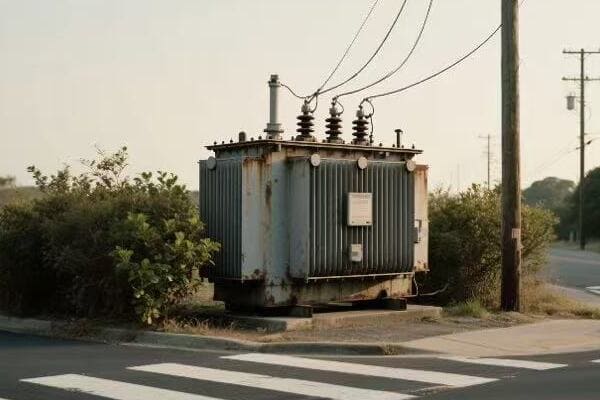
Let’s take a journey through time and explore these key milestones:
The Early Days: Laying the Foundation
- 1831: Michael Faraday discovers electromagnetic induction, setting the stage for transformer development.
- 1836: Nicholas Callan invents the induction coil, an early precursor to the transformer.
- 1885: William Stanley develops the first commercial transformer, marking the beginning of practical AC power systems.
I remember studying these early developments in college. It’s incredible to think how these innovations laid the groundwork for our entire electrical infrastructure.
The Golden Age of Electrification
- 1889: The first three-phase transformer is developed by Mikhail Dolivo-Dobrovolsky, enabling more efficient power transmission.
- Early 1900s: Widespread adoption of transformers leads to rapid electrification of cities and industries.
- 1920s-1930s: Improvements in materials and design lead to more efficient and reliable transformers.
During my early career, I worked on some projects that involved upgrading old transformers from this era. The leap in technology was astounding.
Modern Advancements: Efficiency and Smart Technology
- 1980s: Introduction of amorphous metal cores significantly reduces transformer losses.
- 1990s-2000s: Development of dry-type transformers for special applications.
- 2010s: Emergence of smart transformers with digital monitoring and control capabilities.
I’ve been fortunate to be part of projects implementing these modern technologies. The impact on grid efficiency and reliability has been remarkable.
Transformers in the Age of Renewables and Smart Grids
- 2015 onwards: Development of transformers designed to handle bidirectional power flow from renewable sources.
- 2020s: Integration of AI and IoT technologies in transformer design and operation.
Currently, I’m working on projects that involve these cutting-edge transformers. It’s exciting to see how they’re adapting to the challenges of renewable energy integration and smart grid management.
Here’s a quick overview of how transformer technology has evolved over time:
| Era | Key Features | Primary Benefits |
|---|---|---|
| 1880s-1900s | Basic design, oil insulation | Enabled AC power systems |
| 1900s-1950s | Improved materials, larger capacities | Supported widespread electrification |
| 1950s-1990s | Better efficiency, specialized designs | Enhanced grid reliability |
| 1990s-2010s | Digital monitoring, amorphous cores | Reduced losses, improved monitoring |
| 2010s-Present | Smart features, renewable integration | Grid optimization, flexibility |
The Impact on Power Infrastructure
Throughout these milestones, transformers have consistently shaped our power infrastructure:
-
Enabling Long-Distance Transmission: By allowing voltage to be stepped up and down, transformers made it possible to transmit power over vast distances.
-
Improving Grid Reliability: Advanced transformer designs have significantly enhanced the stability and reliability of power grids.
-
Facilitating Renewable Energy Integration: Modern transformers are crucial in managing the variable nature of renewable energy sources.
-
Enhancing Energy Efficiency: Each generation of transformers has brought improvements in efficiency, reducing overall energy losses in the grid.
-
Supporting Smart Grid Technology: Today’s smart transformers are key components in the development of intelligent, responsive power grids.
As someone who’s been in this field for years, I’ve seen firsthand how these milestones have transformed our energy landscape. From the early days of electrification to today’s smart grids, transformers have been at the heart of every major advancement.
Looking ahead, I’m excited to see how transformers will continue to evolve. With challenges like increasing energy demand, the need for more sustainable power solutions, and the complexities of integrating diverse energy sources, I believe transformers will play an even more crucial role in shaping our energy future.
Conclusion
Transformers have truly been the unsung heroes of our electrical world. From their invention in the 1880s to today’s smart devices, they’ve consistently adapted to meet our changing energy needs. As we face new challenges in power distribution and renewable energy integration, I’m confident that transformer technology will continue to innovate and remain the backbone of our power infrastructure.
Free CHBEB Transformer Catalog Download
Get the full range of CHBEB transformers in one catalog.
Includes oil-immersed, dry-type, pad-mounted, and custom solutions.
Quick Message
Request A free quote
We'd like to work with you
- +86 15558785111
- [email protected]
- +86 15558785111
What We Do
CHINA BEI ER BIAN (CHBEB) GROUP, with 218 million in registered capital, originated from Beijing Beierbian Transformer Group. Headquartered in Beijing for R&D, it operates major production bases in Nanjing and Yueqing, producing high-quality products.
Latest Product
address
BeiJing
No 3,RongJing East Road,BeiJing Economic Technological Development Area,BeiJing,China
JiangSu
No 7️Xiangfeng Road,Jiangning,NanJing,JiangSu,China
WenZhou
No.211, Wei 16 Road, Industrial Zone, Yueqing, Wenzhou, Zhejiang, China.
XiangYang Industrial Zone ,YueQing,WenZhou,ZheJiang,China
contact us
- [email protected]
- +86 13057780111
- +86 13057780111
- +86 15558785111
Copyright © Bei Er Bian Group


